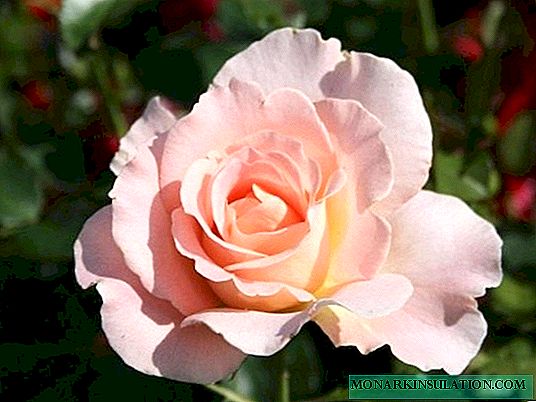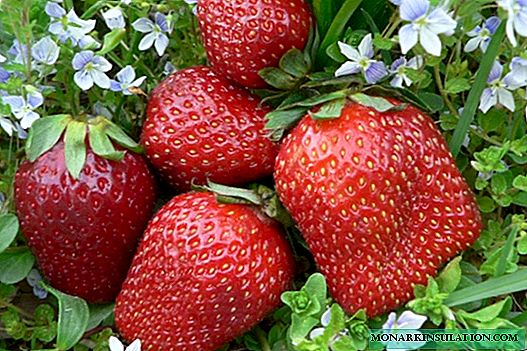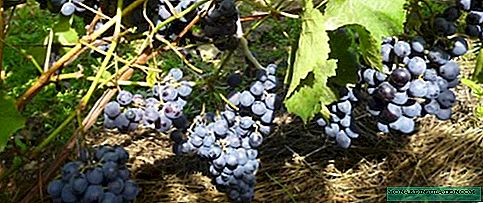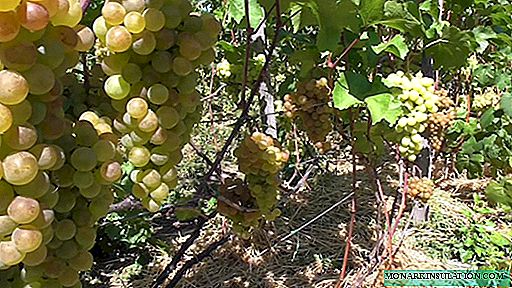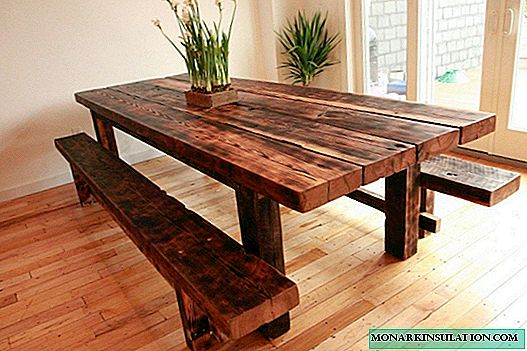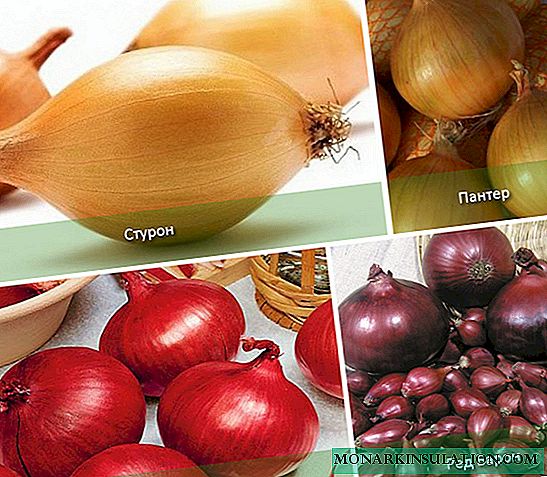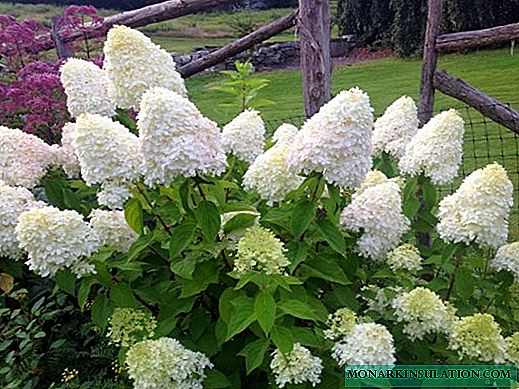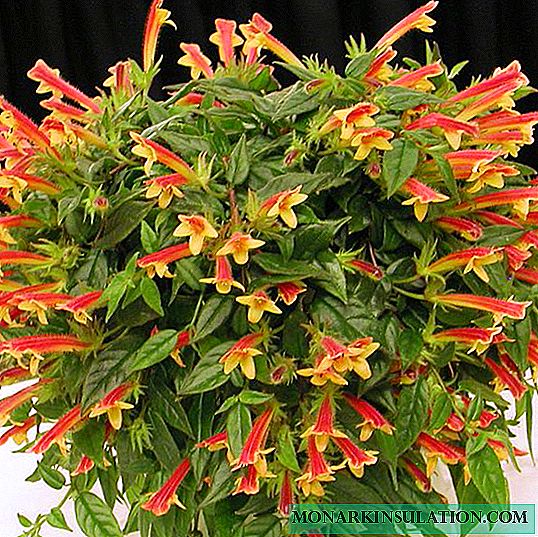Brugmansia is a small beautiful tree (shrub), which belongs to the nightshade family. It used to be part of the Datura genus, but then it was isolated separately. The plant contains a highly stupefying substance, due to which the flower is called the devil's tree.

Bright flowers, like bells, but incredibly large, gave him the name of angelic trumpets and a tropical beauty. Distribution area South America.
Description and features of Brugmansia
At home, the bush grows to 2 m. Its shoots grow very quickly, like the root system. The leaves are oval with smooth edges and a fluff on the surface.

Tubular flowers (diameter - 15 cm, length - 20-25 cm) of white, yellow, pink color. On some bushes you can see several shades at once. They have a pronounced aroma. Only adult plants bloom several times a year.
Varieties of Brugmansia
Quite a few types of brugmansia are suitable for growing in an apartment.
| View | Description | Flowers |
| Fragrant | Large bush (1-2 m). Can be maintained at home and in the garden. | Pure white or with a green tint (30 cm). |
| Golden | Unlike others, it has very large long leaves (50 cm). | Yellow-orange (30 cm). |
| Snow white | Tree-like. Small. With velvety leaves. | Snow-white (25 cm) / |
| Bloody | Big. Winter hardy. | Flaming color (30 cm) Has an interesting smell. |
| Multi-colored | Feature - the longest flowers. | Very large (50 cm). With changing shades. Young are white. When growing up - peach, orange. |

Brugmansia care at home and in the garden
With room care and the maintenance of Brugmansia and in tubs, subject to the rules of care, you can achieve year-round flowering.
| Factor | Spring Summer | Autumn winter |
| Location | It can be planted in the garden or transferred to a cache-pot for open air, but protected from the wind. | Keep away from heaters. Can be removed before spring |
| Lighting | Good, but without direct sunlight. With a lack of lighting to illuminate. | |
| Temperature | + 18 ... +28 ° C. He transfers heat. | + 7 ... +12 ° C. At -5 ° C - dies without shelter. |
| Humidity | At elevated temperature, spray. | Adapts to low humidity. |
| Watering | Abundant and frequent. When flowering cut. | In the house - as the topsoil dries up. |
| Soft defended water. Drain the excess from the pan. | ||
| Top dressing | Mineral fertilizers for flowering plants once every 10 days, with a high content of potassium and phosphorus. A solution of 1 part mullein in 10 parts of water. | Stop it. |
| The soil | Mix with any acidity. Use the land for palm trees or the following composition: humus, peat, sand 1: 1: 1. | |
When planting and caring in the open ground, you must also follow the rules:
- Soil - loamy, oily and nutritious.
- Water abundantly daily. In hot weather, sprayed with watering.
- In rainy cloudy weather, moisten only after the topsoil has dried.
- If Brugmansia in the tub, drain the water from the pan.
- Fertilize like a pot.
Bloom
Flowering Brugmansia, as a rule, takes place from July to December. The longevity of the flowers is small, they quickly fade, but because of their large number, it seems that the plant is continuously flowering. After its completion, the peduncles are removed.
Brugmansia wintering
The end of November is the beginning of the rest period. At this time, the plant begins to drop leaves. But it can be fooled. To do this, they provide heat, preserve the summer regimes of irrigation and top dressing, highlight. Then Brugmansia will bloom further. But this leads to a violation of the natural biorhythm. Therefore, you should give the flower peace before the next season.
In the middle lane, when grown in the garden, the plant is dug up, trimmed and put into the basement. If the region has mild winters, then you can cover the plant for the winter without digging it from the ground. Shelter option: they put straw on the flower, put the garden frame, cover it with agrofiber in several layers, lay down and upward a film to protect it from moisture, wrap it with ropes.
Pruning
With proper care, do not neglect the formation of a bush. In March, the Brugmansia is cut off. Do this before the onset of the growing season.
The first pruning is carried out only by an adult plant, in the second year after flowering. Weakened, dry stems, greatly grown by 1/3, are removed. In this case, do not touch the Y-shaped, on which there will be flowers.
Breeding methods
Brünmansia is propagated mainly by cuttings, but sometimes seeds are also used.
Cuttings
Propagation by cuttings is used in autumn or spring:
- Young but lignified stems with a growth point, with 2-3 buds are trimmed, leaves are removed.
- The container is taken opaque, water is poured with soluble carbon, and planting material is placed.
- Create illumination and temperature - +20 ° C.
- When the roots appear (2 weeks), they are planted in separate pots.
- The soil is taken loose, breathable, consisting of peat, perlite, sand 2: 1: 1.
Seeds
Growing from seeds is a difficult and lengthy process, and the properties of the variety may not be preserved.
- Planted in the first months of winter or early spring.
- For better germination, the seeds are aged in Kornevin.
- The container is taken with light soil, the planting material is distributed there, deepening by 0.5-1 mm, moistened.
- Cover with a transparent cover (glass, polyethylene).
- Provide + 20 ... +25 ° C, good lighting.
- After emergence in 2 weeks, the film is removed.
- Crops are sprayed with settled warm water at least 2 times a day, trying not to pour.
- When the fifth leaf appears, seedlings are planted.
Difficulties in leaving, diseases and pests of Brugmansia
The bush is resistant to diseases and pests, but if you do not follow the rules of the tropical beauty, they can attack her.
| Manifestations | Causes | Remedial measures |
| Leaf fall. | Interruptions in hydration. | Water correctly, given the temperature regime. |
| Stretching, thinning shoots. Blanching foliage. | Lack of light. | Rearrange on a window with enough light. Lighting up with lamps. |
| Growth retardation. | Lack of fertilizer. | Follow the rules of top dressing. |
| The loss of young buds. | Lack of moisture, sudden changes in temperature, little light. | Set the watering mode. Provide good lighting. |
| Eaten leaves and flowers, their fall. | Weevil. | Spray Akktklikom or Fitoverm weekly until the destruction of insects. |
| Yellowing, weakening of the plant. | Whitefly | Apply traps, spray with Actellik. |
| The appearance of stickiness of insects. | Aphid. | Wash with soap and water. To process infusion of tobacco dust. |
| Discoloration of leaves, the formation of cobwebs. | Spider mite. | Increase humidity (a tray with wet expanded clay, a humidifier). Spray with Actara. |
| The appearance of holes. | Slugs, snails (when in the open air). | Treat with insecticides (Actellik, Fitoverm, Spark). |
Mr. Cottager warns: Brugmansia - Datura flower
Despite the magnificence of the flower, it is poisonous. Its smell causes headaches in some people. Because of this, Brugmansia is even banned from growing in individual countries (for example, Argentina). The toxic substances that make up the plant cause hallucinations. Therefore, with care they contain shrubs in a family with children.

